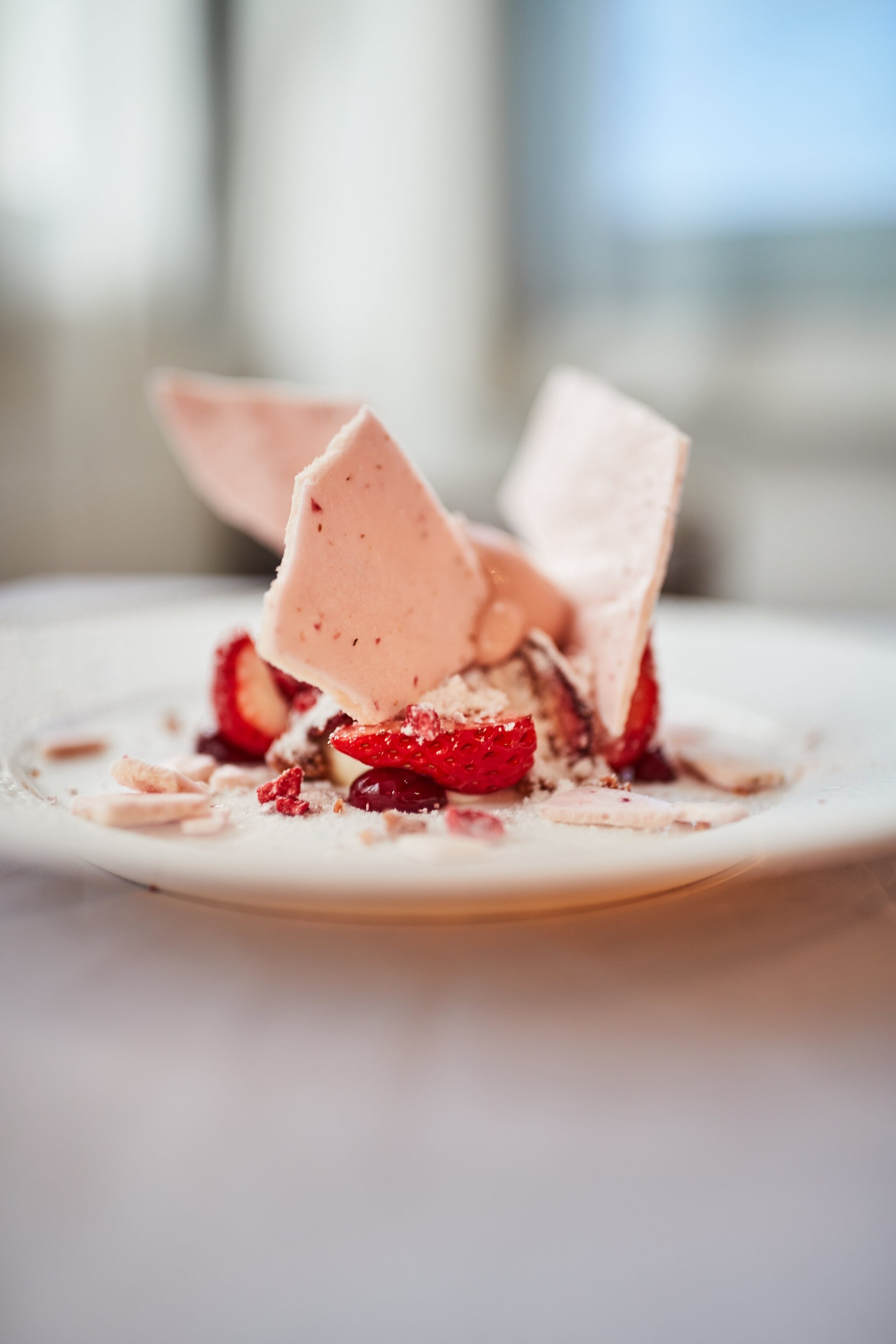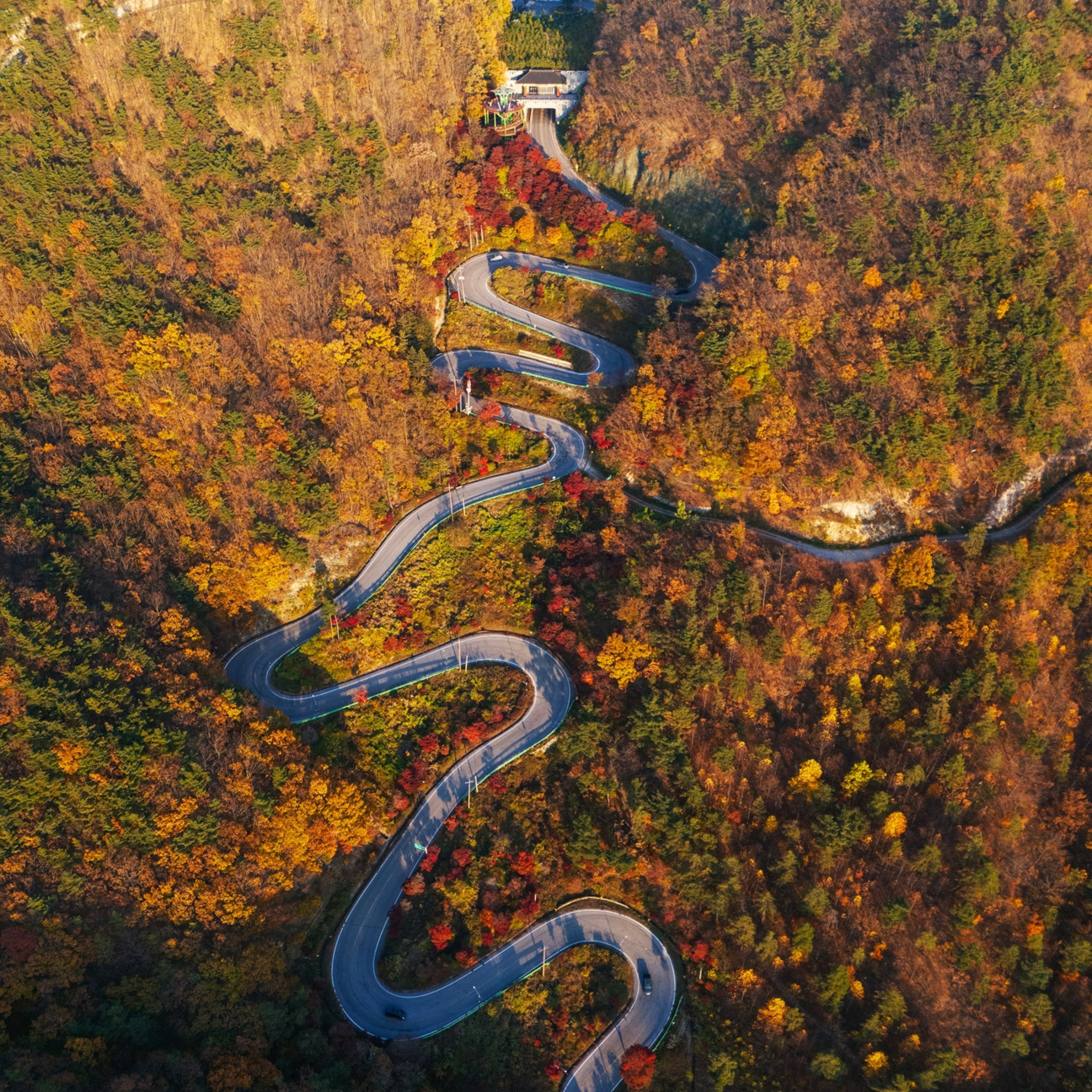Drawing inspiration from the rich culture and history of Korea, imaginative artisans, designers, chefs, and other modern tastemakers are creating new travel experiences found only in Seoul. Get to know this sophisticated capital city in a different and more meaningful way through these eight unique activities.
Gourmet Artisan Desserts


Dessert is elevated from afterthought to art form at JL Dessert Bar in the culturally diverse Yongsan district. Chef-owner Justin Lee uses fresh, colorful, and, often, surprising locally seasonal ingredients—such as plump Korean pears, avocados, cherry tomatoes, and Korean ginger—in his dessert masterpieces. Lee modeled his plated dessert-paired drink concept after fine-dining tasting menus. His house specialty is a feast for the senses: a six-course, sweet-and-savory dessert menu with suggested beverage pairings.
To sample artful interpretations of more traditional Korean desserts like rice cakes and honey cookies, visit Dongbyung Sangryoun dessert café in Seongbuk-dong. Chef-owner Park Kyung-mi, a master of Joseon Dynasty royal cuisine, regularly incorporates novel ingredients, including braised bellflower root, pine nuts, and makgeolli (unfiltered Korean rice wine), bringing new flavors and textures to centuries-old recipes.
Modern Hanbok Fashion

Forward-thinking Seoul fashion designer Kim Min Jeong is transforming hanbok (traditional Korean clothing) into trendsetting ready-to-wear, special occasion attire, and haute couture.
Unlike conventional hanbok, which is primarily made of heavy silk in hues reflecting the social and marital status of the wearer, Kim’s wedding and modern lifestyle brand, Hanbok Lynn, features lighter fabrics in a rainbow of colors, including cotton candy pink, cool slate, and mint green.
Each Hanbok Lynn design reinterprets the charm and elegance of traditional hanbok—short, bolero-like wrap jacket (jeogori) paired with either pants (baji) for men or a full skirt (chima) for women—by incorporating imaginative flourishes like ruffles, striped sleeves, and off-the-shoulder tops. The modern makeover is inspiring a new generation to embrace the timeless beauty of hanbok.
Contemporary Tea Houses

Tea blender Eun Bin puts a fabulously fun and modern twist on the ancient tea ceremony at her tiny ALTDIF Tea Bar in Hongdae. The sleek café’s seasonal, themed tea courses are part tastings, part performance art. A tea master guides up to seven guests through the five-course, two-hour, all-sensory experience, which includes storytelling, a snack, and the main event: five creatively-different hot and iced brews.
Each five-course tasting has a whimsical theme, such as tarot cards or Alice in Wonderland. The teas or tisanes (a water-based infusion of herbs, spices, fruits, or flowers) are related to theme and have fanciful names. For instance, a recent blend of chamomile, peppermint, and pineapple was dubbed recent Space Odditea, As guests sip their selections, the tea master shares the story behind each blend.
Korea Wine Culture

Traditionally known only for makgeolli, a fermented rice wine dating back some 2,000 years, modern Korean wine culture is blossoming thanks to native fruits. A growing crop of inventive vintners is looking beyond cultivated grapes to produce varietals made from Korean-grown apples, peaches, wild grapes, plums, kiwi, raspberries, persimmon, and omija, a fragrant five-flavored berry.
Fresh, sweet, and fragrant Korean wines, such as the sparkling, white Cheongsu by Grand Coteau, pair naturally with traditionally spicy and salty Korean dishes. Wine aficionados can savor sommelier-curated courses and dinners showcasing Korean varietals at Le Cabaret Cité. The gourmet, Asian-French dining destination is located inside THE PLAZA Seoul, a stylish, boutique hotel in the historic heart of the city. Le Cabaret Cité’s impressive, 200-label wine list includes several regional Korean wines available by the glass or bottle.
Handmade Hanji Paper

Artisans and designers are breathing new life into hanji, fine-quality Korean paper made from the bark of a paper mulberry tree. To help preserve the thousand-year-old craft of hanji-making, the Hanji Culture and Industry Center (HCIC) in Seoul is promoting awareness of the paper’s strength, durability, and versatility.
Historically, hanji was used for art, calligraphy, as wallpaper, and to make traditional craft items, such as folding fans and umbrellas. Today, hanji makers are incorporating new colors and patterns, and artists are reimagining how to use the paper, including to make clothing. The HCIC, the world’s first cultural complex devoted to hanji, features some 400 different handcrafted hanji products, regional hanji samples to see and touch, and hands-on hanji workshops.
Traditional Hansik Cuisine


An enlightening helping of history accompanies the fare at Gyuban and Hansikgonggan, two hansik (traditional Korean cuisine) hotspots run by acclaimed female chefs. Gyuban owner-chef Kim Ji Young served as culinary director of Immortal Classic, a Korean television drama chronicling a fictional female royal chef’s quest to become a royal doctor. Hansikgonggan’s co-owner-chef Cho Hee-sook, known as the godmother of Korean cuisine, is legendary for passing down hansik traditions to young chefs.
At Gyuban, Kim scours vintage cookbooks and royal court records to recreate centuries-old royal recipes for traditional menu items such as kimchi (fermented cabbage) and pork marinated in doenjang (soybean paste). Hansikgonggan, named one of Asia’s 50 Best Restaurants in 2020 and 2021, merges past and present in tradition-inspired dishes like blended rice-and-pine nut porridge topped with abalone, scallop, shiitake mushroom, and shrimp.
Holistic Spa Treatments
In high-energy Seoul, maintaining mind-body wellness means making time for holistic spa treatments inspired by Korean nature and ancient traditions. SPA 1899, named for the year the Korean Ginseng Corporation was founded, specializes in red ginseng-infused rituals and therapies, including a hydro spa and body mask. Red ginseng, a uniquely Korean product thought to promote both inner and outer beauty, is often called “Asia’s immunity booster” for its purported health benefits.

Red and white ginseng serums, oils, creams, and infused baths are also part of the experience at Premium Korean Herbal Medicinal Anti-Aging Spa, located inside the Sulwhasoo flagship store. Founded in 1966, Sulwhasoo combines cutting-edge Korean science and nutrient-rich local herbs to create its line of luxury, holistic skin care products.
Craft Cocktail Bars

The master mixologists at Seoul’s craft cocktail bars are reinventing standard drinks with decidedly Korean ingredients. Regionally grown ginseng, green tea, nashi (Asian pear), and omija berry, and liquors made from Korean apples and plums add a refreshingly different edge to classic cocktails like a Manhattan, Martini, and Negroni.
Complementing the unique cocktails are the bars’ atmospheric settings. Bar Cham, an intimate cocktail lounge, is housed in a hanok (traditional Korean house). Charles H, the lavish, speakeasy-style club on the lower level of the Four Seasons Seoul, is tucked behind an unmarked door, while shelved library books mask the secret entrance to Le Chamber, a glamorous hidden bar illuminated by vintage chandeliers.








